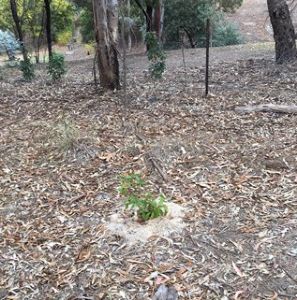Restoring the natural bush on rural roadsides and keeping roadsides free of invasive weeds is one of the important jobs Parklands do in our region.
Often regarded by neighbours as part of their private property, or at best merely vacant space, rural roadsides are actually public land, to be managed for the common good.
Roadsides are more and more valued as essential bush corridors, playing a vital role in the preservation of native species right across the country. Seen from an aerial photo, the value of roadsides in linking areas of bush becomes obvious. There are sometimes no other linkages at all.
Where farmland is often largely cleared, with only the odd paddock tree remaining, roadsides can provide the only continuous habitat cover for native birds and animals; the only opportunity for plants to pollinate neighbours from one area to another. Like arteries linking our all-too-rare bush incubator sites, roadside bush corridors allow the movement of wildlife and vital exchange of DNA within species.
Keeping fallen timber on roadsides to provide food and shelter for small species, preventing invasive weeds from taking over native habitat, retaining large trees to provide breeding hollows, restoring the natural range of plant species to provide that continuous habitat linkage; these are the tasks that neighbours and community can undertake for the common good.
As a neighbour, ensuring that your actions do no harm is just as important. Planting only within your boundary and not planting invasive species is a good start. If you are planting a screening or shelter belt on your property, aim for non-invasive species at least. Even better, local native plants will thrive in the conditions, won’t need watering and will provide suitable habitat for native birds and animals.
Parklands are happy to provide advice on species suitable to your roadside site – please message us on Facebook.






